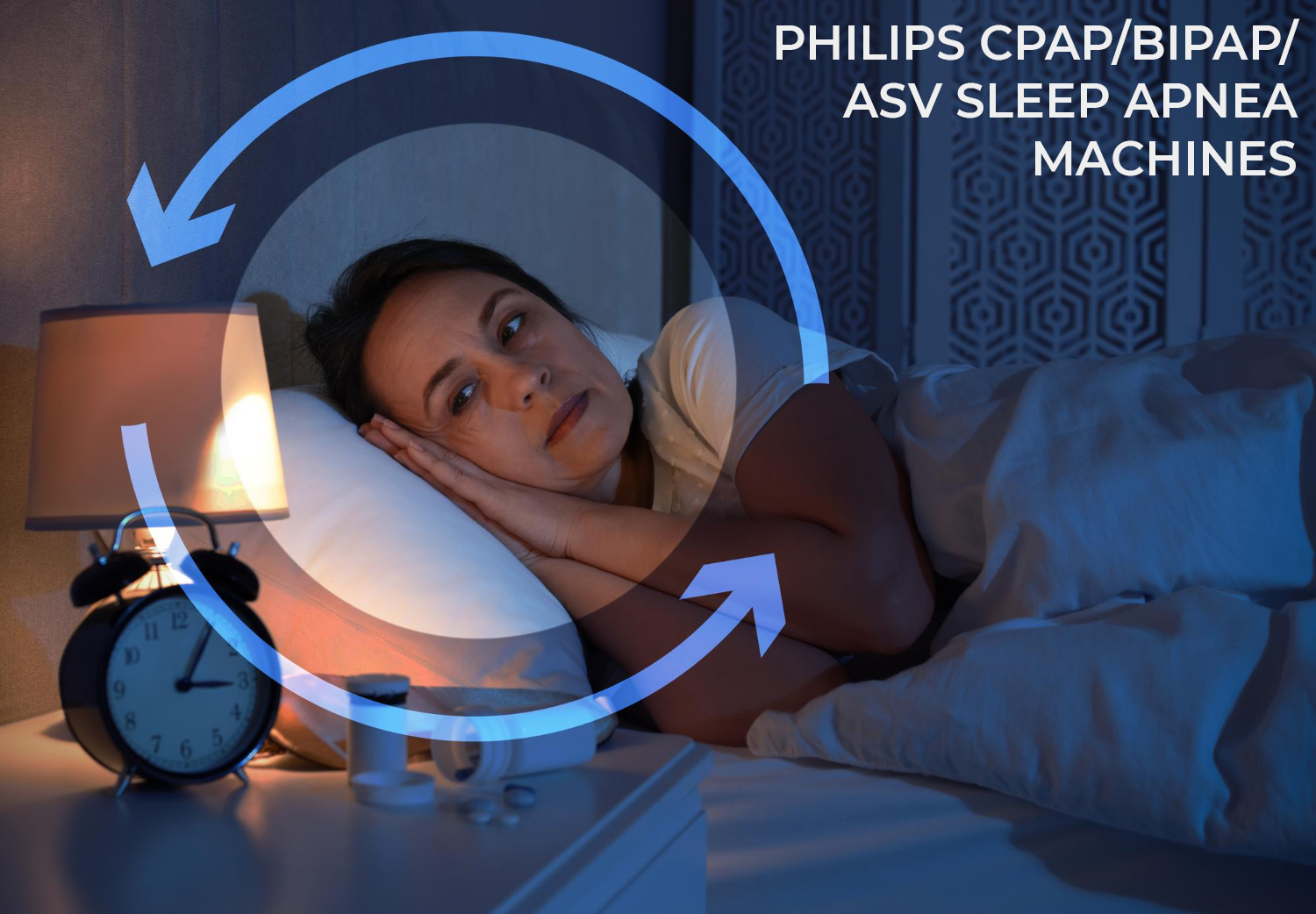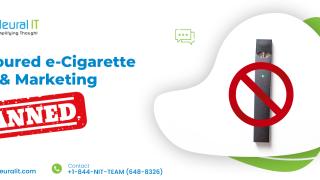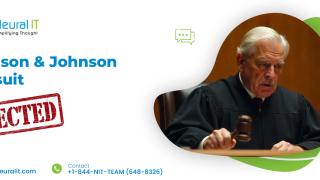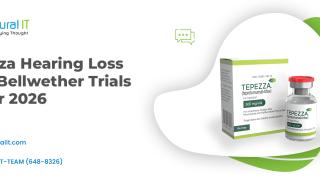CPAP, or Continuous Positive Airway Pressure, eliminates apnea events during sleep by delivering pressurized ambient air (regular room air) through a delivery system (tubing and mask). CPAP is very effective in the treatment of sleep apnea, as it improves the patient's sleep; thus, enhancing the quality of life.
BiPAP, or Bi-Level Positive Airway Pressure, is also a form of sleep therapy. It delivers alternating levels of a lower expiratory pressure (EPAP), allowing the patient to exhale easily, and a higher inspiratory pressure (IPAP) to keep the airway open as a patient breathes in. Thus users with neuromuscular disease easily get adapted to a BiPAP. The device reduces the muscular effort required by the patients to get air in and out of the lungs.
ASV is a BiPAP or bilevel PAP with a backup rate. ASV provides positive expiratory airway pressure (EPAP) and inspiratory pressure support (IPAP), which is servo-controlled based on the detection of CSA. The device eliminates obstructive sleep apnea by providing a fixed EPAP. It normalizes the patients ventilation by changing inspiratory pressure above the expiratory pressure. With normal breathing, the device acts as a fixed CPAP by providing minimal pressure support. The device increases the pressure support above the expiratory pressure up to maximum pressure when the device detects CSA.
These machines for Philips got recalled on June 14, 2021. There are between 1-2 million Phillips CPAP machines in the United States.
Users are at risk for leukemia, breast cancer, liver cancer, lung cancer, pancreatic cancer, kidney cancer, and many more potentially deadly cancers due to the Polyurethane (PUR) foam present inside the CPAP machines. PUR is a cancer-causing agent just like gasoline, and it is often called "Solid Gasoline."
The polyester-based polyurethane (PUR) foam decomposes over time and emits toxic gases during the decomposition process. The gases released during the process can cause respiratory problems, cognitive difficulties, asthma, headache, nausea and vomiting, hypersensitivity, and a number of different cancers.
There are some patients whose treatment for ASV may be recommended. For example, patients with severe heart failure may experience increased mortality rates by using servo-ventilation devices.
In addition, some sleep-breathing patients with lower or pre-existing health conditions should not use ASV. This includes patients who suffer from the following conditions:
Deep and chronic hypoventilation
Severe chronic obstructive pulmonary disease (COPD)
Increased pressure of carbon dioxide (PCO2) in ABG (low blood pressure above 45 mm Hg)
Thoracic or neuromuscular disease
Features of DreamStation BiPAP AutoSV
Servo-Ventilation Algorithm: An algorithm designed to add pressure support in a way that strengthens breathing and delivers a low level of mechanical intervention.
Auto Backup Rate: BiPAP autoSV backup level is designed to support between intermediate apneas while automatic breathing is encouraged.
Auto EPAP: auto EPAP algorithm is designed to keep the upper airways open, the algorithm responds to blocking events and searches for very low health pressure.
Accurate menu plan: A menu based on graphics inspired by smartphone navigation for easy operation.
Ambient light sensor: Automatically adjusts screen brightness for day or night view
Bluetooth Integrated Connection with DreamMapper: Bluetooth is built into the SD Data Card for data storage. Bluetooth connects to the DreamMapper app to track treatment. The DreamMapper app is available on compatible iOS (iOS 6 or new) and Android devices (2.2 or new) and can be downloaded from the iTunes App Store or Google Play Store. IOS and Android device.
DreamMapper: A free web-based app with inspirational alerts, troubleshooting tips, and educational content. The DreamMapper app is designed to help you participate in the development of sleep apnea treatment. Built-in Bluetooth sends important information about your sleep to DreamMapper, allowing you to stay in touch with your treatment.
SD card and compliance codes: Easily share sleep details with the care team.
Two steps of the air filtering system: The Ultra-fine filter provides additional filtering of excellent particles.
Heated Humidifier: Heated Humidifier connects directly to the machine and incorporates dry box technology to help reduce the chances of water entering the machine from moisture. The humidifier can be set to the normal temperature mode which provides constant night temperatures, where the humidifier and fire tube have 0 to 5 temperature frames and 0 is turned off and 5 is at high temperatures. Flexible mode is available to monitor high humidity and automatically adapt to night temperatures to provide maximum humidity.
Voluntary Burning Option: The DreamStation Heated Tube can be added to further medical comfort by helping to retain heat and moisture. No More Rain, the Hot Tube maintains the air temperature brought to the patient. Preventing Rain, even if the room temperature drops at night. If the humidifier is not used, the combustion tube can be connected directly to the machine, although it will not burn.
Serious Alleged Injuries May Include:
- Leukemia
- Breast cancer
- Lymphatic cancer
- Liver cancer
- Nasal cancer
- Lung cancer
- Non-Hodgkin Lymphoma (NHL)
- Brain cancer
- Multiple Myeloma
- Prostate cancer
- Bladder cancer
- Testicular cancer
- Stomach cancer
- Hematopoietic cancer
- Papillary carcinoma and other thyroid cancers
List of Philips BiLevel PAP and CPAP Devices
Philips E30 (Emergency Use Authorization)
Philips DreamStation ASV
Philips DreamStation ST, AVAPS
Philips SystemOne ASV4
Philips C-Series ASV, S/T, AVAPS
Philips OmniLab Advanced Plus,
Philips SystemOne (Q Series)
Philips DreamStation, CPAP, Auto CPAP, BiPAP
Philips DreamStation GO, CPAP, APAP
Philips Dorma 400, 500, CPAP
Philips REMStar SE Auto, CPAP
News
Philips CPAP Devices Lawsuits To Be Consolidated In An MDL
A request to consolidate Philips CPAP machines lawsuits has been raised in the federal court post the FDA's issue to recall the devices considering the growing number of claims.
The lawsuits allege the devices were dangerous and contained defective PE-PUR foam, which resulted in health hazards to the users. It is also observed that the foam degrades over time, resulting in the release of black particles or toxic chemicals directly into the air pathway.
Eventually, Philips recalled around 3.5 million CPAP, BiPAP and ventilator breathing machines from the U.S. market and urged the users to prohibit the use of the devices. The toxic particles released by the foam in the devices are linked to causing severe respiratory problems and other health complications, including cancer.
The first plaintiff who filed the lawsuit against the device maker has requested the federal court to consolidate the similar lawsuits and claims in an MDL for a common outcome and fair hearing.
Another plaintiff who filed the lawsuit in the U.S. District Court for the Middle District of Georgia on July 2 alleged that he experienced disrupted respiratory system, cellular damage, and DNA damage, and got diagnosed with lung cancer in June 2021 due to the daily use of the device.
Currently, there are at least ten different lawsuits filed across five different U.S. District Courts nationwide. The experts state that the number of Philips CPAP Machine lawsuits is expected to grow in the coming weeks and months as millions of users have been affected.
What is the difference between CPAP, APAP, and BiPAP machines?
Other types of respirators include APAP and BiPAP devices. Here's how they differ:
CPAP device. This device is designed to produce compressed air at a constant temperature level. To change the air pressure, you must reset the device settings.
APAP machine (automatic automatic airflow). This type tests your breathing all night. It automatically adjusts air pressure to compensate for changes in your sleeping area or medications that may alter your breathing.
BiPAP (Bi-level positive airflow pressure). This device has two compression settings, one air pressure and one breathing pressure. Used for people who cannot tolerate CPAP equipment or have high levels of carbon dioxide in their blood. BiPAP devices can also come up with a respiratory rate for patients with moderate sleep apnea. Backup breathing rate ensures that the person is breathing, as the main problem with central sleep apnea is starting to breathe.
Benefits of CPAP treatment
You will feel alert and alert.
Sleep apnea causes you to lose sleep or sleep poorly. CPAP treatment stops many respiratory problems that interfere with your rest, so you feel more refreshed when you wake up. Getting more rest can also help you to focus on work, keep your energy up, and help reduce your risk of depression.
You may be able to get high blood pressure uncontrolled.
A growing number of studies link high blood pressure to physical illness. Among people with severe hypertension, more than 70% have sleep apnea. Adherence to CPAP treatment, however, has been shown to help these people control their blood pressure in an important way.
You can reduce the risk of stroke.
Sleep apnea is a serious risk factor. While not yet many studies have been conducted on whether CPAP treatment specifically prevents first-line disease, many studies have shown that it significantly reduces the risk of developing second-line disease. However, the American Heart Association says it is reasonable to assume that the use of CPAP could help prevent the first stroke.
You can reduce the risk of other heart problems.
In addition to high blood pressure and stroke, sleep apnea has been linked to many heart-related conditions including:
Atrial fibrillation (abnormal heartbeat)
Bradycardia (slow heartbeat)
Vascular disease (also known as heart disease)
Heart failure
Treating your sleep apnea with CPAP therapy can prevent or control many of these problems.
You can keep your mind sharp for a long time.
A 2011 study found that, for the first time, sleep apnea (SDB) could contribute to mental retardation and dementia. Since then, other reports have emerged indicating that the CPAP treatment of SDB may delay the onset of mild mental retardation. And among patients with Alzheimer's disease, CPAP has been found to prevent dementia.
You can improve your sexual life.
Erectile dysfunction affects about 12% of men under 60 and between 20% and 30% of men older than 60 years of age. It is also strongly associated with sleep apnea. But research has shown that treatment for sleep apnea with CPAP therapy can help some men regain their normal sexual function.
How To Easily Sleep With Your CPAP Machine
Your doctor needs a CPAP machine to help your sleep breathe. Don't worry about sticking to a noisy gadget all night with tubes there, a mask here, and cords that go all the way.
If you have sleep apnea, you can stop breathing, briefly, up to 30 times or more per hour when your breath is blocked or restricted. CPAP, short for continuous air pressure, pushes air into it to keep it open.
The machine has a pump that controls the flow of air, a tube that carries air from the machine to you, and a mask that runs through your mouth, nose, or both.
As long as the mask is tightly closed so that the air pressure from the tube remains stable, CPAP will do its job. It is up to you to decide which type of makeup is right for you, and which straps are best for you. Your doctor and sleep technology can help you make sure everything is working and getting in the right way.
Noise: In the old days, CPAP equipment was weird and noisy. Instead of whoosh, it was more than WHOOSH. Others make a bell, by clicking on the sounds. But that was then. The equipment today is smaller, quieter, and less visible. Most products are near-silent. That bonus is not only for CPAP users, but also for their bedside partners.
Pressure: Utilities have different air settings. Some of them vary depending on the air you breathe or the air you breathe. Your doctor will help you find the right and effective dose for you.
Dry: Some CPAP users say that all forced air will dry out the nose and mouth. Most machines have filters to fix that. Some even burn wet air.
Respiratory problems: If you feel full of allergies, sinus problems, or physical problems with your nose, you may have trouble using a CPAP machine. However, the problem often goes away when you are dealing with your congestion, be it medication, allergies, or sometimes surgery.
Learning to appreciate CPAP
For many people, these devices are the best way to treat obstructive sleep apnea. The challenge for doctors and sleep specialists is to reassure caregivers that they are better than one. In addition to sleep deprivation, however, people who do not receive help for the problem face a higher risk of heart attack, stroke, high blood pressure, and other health problems.
Your doctor can perform tests based on your symptoms and signs and sleep history, which can provide you with help from someone who shares your bed or home, if possible.
Testing usually involves staying up all night at your sleep center and other physical activities during sleep. A home sleep test can also be a way.
Tests for sleep apnea include:
Night polysomnography: During this test, you are connected to instruments that monitor your heart, lungs and brain, respiratory system, arm and leg movements, and blood oxygen levels while you sleep.
Home sleep test: Your doctor can give you simple tests that will be used at home to diagnose sleep apnea. These tests usually measure your heart rate, oxygen level, airway and breathing patterns.
If the results are unusual, your doctor may prescribe treatment without further examination. Portable monitoring devices do not detect all cases of sleep apnea, however, so your doctor may still recommend polysomnography even if your initial results are normal.
If you have obstructive sleep apnea, your doctor may refer you to an ear, nose, and throat specialist to remove the obstruction in your nose or throat. A checkup by a cardiologist (cardiologist) or neurologist may be needed to determine the cause of moderate respiratory failure.
Remedies
Continuous air pressure (CPAP): If you have moderate to severe sleep apnea, you can benefit from using an air pressure mask while sleeping. With CPAP (SEE-pap), the air pressure is much higher than that of the surrounding air and is just enough to keep your upper airways open, preventing breathing and sneezing.
You may need to try more than one type of mask to get a comfortable one. Do not stop using the CPAP machine if you have problems. Ask your doctor what adjustments you can make to increase your comfort.
In addition, consult your doctor if you continue to sneeze or start sneezing again despite treatment. If your weight changes, the CPAP machine pressure settings may need to be adjusted.
Other air pressure devices: If using a CPAP machine continues to be a problem for you, you can use a different type of air pressure device that adjusts the pressure while you sleep (auto-CPAP). Units that provide bilevel positive airway pressure (BPAP) are also available. This puts more pressure on you when you inhale and lessen your exit.
Oral: Another option is to wear a mouthpiece designed to keep your throat open. CPAP works more reliably than oral contraceptives, but oral ingredients can be easier to use. There are many devices available at your dentist. You may need to try different devices before you find what works for you.
Once you have found the right balance, you will need to follow the dentist several times during the first year and every now and then to make sure the balance is right and re-examine your signs and symptoms.
Treatment of treatment-related complications: Possible causes of moderate respiratory infections including cardiovascular or neuromuscular diseases, and treating those conditions can be helpful. Extra oxygen. Using extra oxygen while you sleep can help if you have moderate sleep apnea. Different types of oxygen are available through oxygen-carrying devices in your lungs.
Flexible servo-ventilation (ASV): This newly approved air machine reads your normal breathing pattern and stores data on a built-in computer. After sleep, the machine uses pressure to make your breathing pattern adjust and prevent a break from your breathing.
Surgery is usually chosen only after other treatments have failed. Generally, at least a three-month trial of alternative therapies is recommended before considering surgery. However, for a small number of people with certain jaw problems, it is a good way to start.
Surgical options may include:
Tissue removal: During this procedure (vulopalatopharyngoplasty), your doctor removes tissue from the back of your mouth and over your throat. This type of surgery can be effective in setting the throat structures in motion and inhaling the odor. It is less effective than CPAP and is not considered a reliable treatment for obstructive sleep apnea. Removing tissue from the back of your throat with radiofrequency (radiofrequency ablation) can be a method if you cannot tolerate CPAP or oral contraceptives.
Weight loss: Another way to reduce the tissue behind your mouth and behind your throat is using radiofrequency ablation. This procedure can be used for short sleep breathing. Some studies have found that this has similar effects on tissue removal, but there have been fewer surgical risks.
Jaw reset. In this process, your jaw is moved forward from the remnants of your facial bones. This increases the space behind the tongue and soft palate, making blocking less likely. This process is known as maxillomandibular development.
Plants: Soft rods, usually made of polyester or plastic, are surgically inserted into the soft tongue after receiving a local anesthetic. More research is needed to determine how plants function.
Emotional stimulation. This requires surgery to insert a nerve stimulator that controls the movement of the tongue (hypoglossal nerve). Increased enhancement helps keep the tongue in an area that keeps the airway open.
Building a new tracheostomy: You may need this type of surgery if other treatments have failed and you have a serious, life-threatening sleep apnea. In this procedure, your surgeon opens a rib cage around your neck and inserts a metal or plastic tube into your lungs.
You keep the opening closed during the day. But at night you reveal it to allow air to enter and leave your lungs, passing through the air opening in your voice.
Other types of surgery can help reduce wrinkles and contribute to the treatment of sleep apnea by clearing or increasing airways:
- Surgery to remove enlarged tones or adenoids
- Bariatric surgery
FDA Safety Warnings:
According to an order issued on June 30 by the U.S. Food and Drug Administration (FDA), people are requested to restrict the use of Philips Respironics ventilators, BiPAP, and CPAP machines.
Legal Updates:
Defendants:
Philips Respironics
Allegations:
The plaintiffs alleged that the company was aware of the hazardous risks associated with the machines even before the recall.
Lawsuit Status:
On July 07, 2021, the first plaintiff who filed the first lawsuit against Philips CPAP machines in the Eastern District of Pennsylvania requested to consolidate the multiple claims in an MDL. Currently, there are at least ten different lawsuits filed across five different U.S. District Courts nationwide. The number of lawsuits against the machines is expected to increase in the coming weeks and months as more users are filing the lawsuits.
MDL Status:
As of July 15, 2021, the court is yet to consolidate the cases to create an MDL.
Important Verdicts & Settlements:
As of July 2021, no settlements or verdicts have been announced against Philips CPAP/BiPAP/ASV Sleep Apnea Machines.
Law Firms
Onder Law
Parker waichman
Napoli Shkolnik
Evidence:
- Duration Of Usage Of Philips CPAP/BiPAP/ASV
- Indication Of Usage Of Philips CPAP/BiPAP/ASV In Medical Records
- Evidence Of Injury In Follow Up Medical Records
Medical Record Review and claim validation of Philips CPAP/BiPAP/ASV Sleep Apnea Machines case should take approximately 2 hours in most instances; however, this approximation may vary in cases based on the volume of records.





